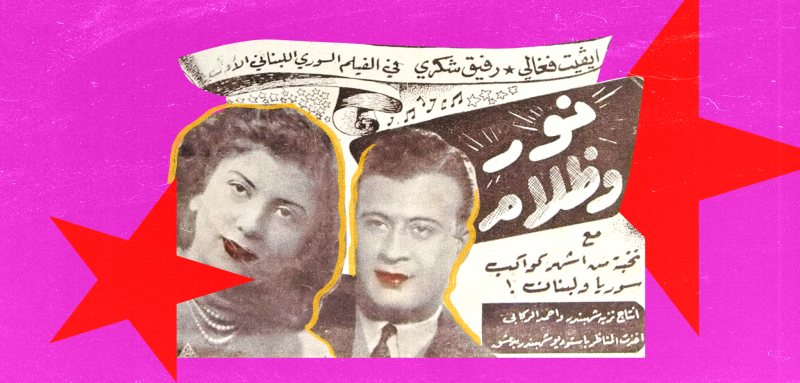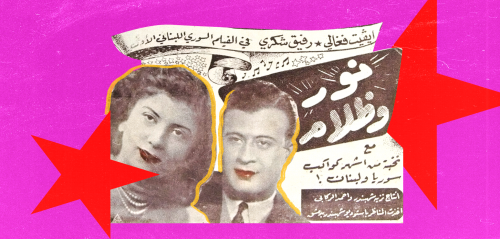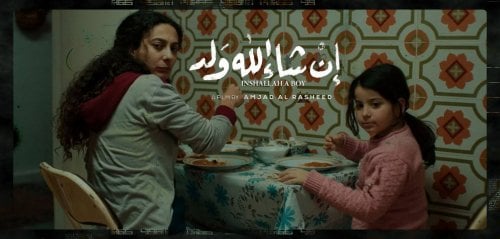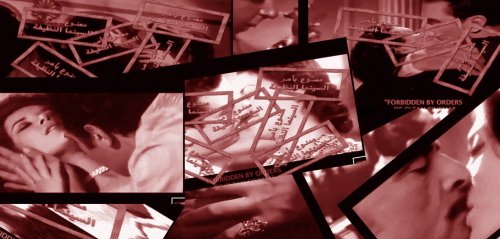In 1928, promotional advertisements appeared in major Syrian newspapers, announcing the upcoming premiere of Syria's first feature film, "Al Muttaham al Baree" (The Innocent Suspect), at the Cosmograph Cinema in Damascus' Bahsa district. This announcement caused quite a stir in Damascus, coming less than a year after Egypt produced its first feature-length film. The pioneers behind the 30-minute-long Syrian film were all amateurs, including actors, directors, and cinematographers, united by their passionate love for cinema and their aspiration to bring this art form and industry to Syria.
They established a production company called "Harmon Film" and imported a 35mm film camera, the Kinamo model, all the way from Germany, with the help of the Damascene merchant, Nazem al-Sham'a. Despite having an instruction catalog, the film's team struggled to operate the camera, leading them to seek the assistance of an amateur photographer named Rashid Jalal, who, despite his young age of twenty, possessed knowledge of photography.
All the scenes were captured in outdoor settings and within the caves of Mount Qasioun overlooking the Syrian capital. But just before its public premiere, the film was halted by a censorship committee due to the appearance of a Muslim Syrian girl on screen
Jalal had gained prior experience in documenting the visit of the French High Commissioner, Maurice Sarrail, to the Grand Serail at Marjeh Square three years prior. This made him the most knowledgeable figure among Syrians in the realm of filming and photography. As a result, he was sought after and contracted to partake in "The Innocent Suspect", both as an actor and a photographer. He then became a fourth partner in "Harmon Film", after his camera equipment and printing supplies for the negative were assimilated into the company's assets. The partners also reached a mutual agreement to equally share any potential profits or losses.
The film's production spanned eight continuous months, with all scenes shot outdoors, some of which took place in the caves of Mount Qasioun, overlooking the Syrian capital. However, just before its highly anticipated public screening, the work faced an abrupt halt by the censorship committee due to the presence of a Muslim Syrian girl on the screen, starring alongside Rashid Jalal. The committee justified their decision, stating that such an occurrence should not happen in a conservative city like Damascus. In response, the director, Ayoub Badri, tried to reason with them, emphasizing that the actress was of mature age, over twenty-five, and had obtained her family's approval to appear in the film.
At that time, cinematic works were subject to a joint censorship committee comprised of religious figures and clerics from both Muslim and Christian communities. This committee held the power to approve or reject any film screened in Syrian cinemas, with the exception of French films originating from Paris, which were exempt from any Syrian censorship. These French films were considered quite provocative in the 1920s, featuring numerous intimate scenes and passionate kisses. However, the censorship committee was unable to stand against them, focusing their approval primarily on American "cowboy" films, Tarzan films, and Charlie Chaplin comedies.
In 1923, the committee had previously banned the German film "Adam and Eve" for depicting the first creation of humans by God on the screen. Additionally, they halted the American film "Fazil", starring Charles Farrell, which portrayed an Arab prince mistreating his European wife.
Initially, the French mandate authority refrained from interference, in order to avoid any conflict with the religious establishment. However, it soon commended the committee's decision to ban the film, alleging that its music had been "plagiarized from international works", despite the absence of intellectual property laws in Syria at the time.
Consequently, the production company was compelled to reshoot the scenes featuring the Syrian actress, replacing her with a German dancer from the Olympia nightclub in Damascus. This change doubled the filming and production costs, significantly surpassing the box office returns and eventually leading to the bankruptcy of the company. Prior to its closure and liquidation, Harmon Film filmed a sporting event, commissioned by Khaled al-Azem, the owner of "Muawiya Football Club", to document and match between his team and the American University of Beirut team.
"Under Damascus Skies"
Today, only two minutes of "The Innocent Suspect" remain, and all its promotional materials have been lost. After this, the second cinematic venture was "Taht Sama'a Dimashq" (Under Damascus Skies) in 1932, also a 30-minute silent film starring Rashid Jalal and the singer Mustafa Hilal. The film was written and directed by Ismail Anzour, who had recently returned from studying directing in Austria (father of the contemporary director Najdat Ismail Anzour).
The film was set to be screened at the Abbasid Opera house, near the Hijaz Station. It featured a mix of amateurs, such as Neshat Al-Taghlabi, who later became the director of Radio Damascus, and professionals like the artist Abdulwahhab Abu Saud and Tawfiq al-Otri. The same German dancer who had rescued "The Innocent Suspect" four years earlier also appeared in this film. The producing company, "Helos Film," was newly established with a capital of 400 Ottoman gold liras, and it was owned by Rashid Jalal, businessman Rafiq al-Kuzbari (father of the contemporary Austrian-based businessman Nabil al-Kuzbari), and Hajj Adeeb Khayr (father of the Syrian producer Munther Khayr, famous for the '90s TV series "Khan al-Harir").
At the time, cinematic works were subject to a censorship committee comprising representatives of both Muslim and Christian clergy. It had the authority to reject any film screened in Syrian cinemas, except French films which were exempt from Syrian censorship
The film's plot revolves around jealousy between a man and a woman, and its outdoor scenes were filmed at the Hijaz Station, Ghouta, and the areas of Dummar and Rabwah. The indoor scenes took place in the palace of Prince Saeed al-Jazairi, the grandson of Prince Abdul Qadir al-Jazairi. However, the film suffered a significant blow when it was preceded in the show by the Egyptian film "Inshudat el Fuad", which captivated Syrian society as the first Arabic-speaking film to be screened in Damascus. The audience's interest in "Under Damascus Skies" dwindled, resulting in a loss of 300 Ottoman gold liras, equally distributed among the partners of "Helos Film". Many years later, the film was revived at the Damascus Film Festival in 1985 and during the celebration of Damascus as the Arab Capital of Culture in 2008.
Light and Darkness
The third groundbreaking cinematic venture in Syria was the film "Light and Darkness" in 1948, starring the renowned singer Rafiq Shukri and the Lebanese actress Yvette Feghali. This film marked a significant milestone as the first film with dialogue in Syria and Lebanon, featuring a stellar cast that included Saad al-Din Bakdounis, who led a theatrical group named after himself, Anwar al-Baba in his famous role as "Umm Kamel" the midwife, and Hikmat Mohsen as the well-known character "Abu Rushdi". All of them were esteemed radio personalities associated with the recently established Radio Damascus, and they would go on to play crucial roles in the nascent Syrian television in 1960.
The screenplay for the film was by Ali al-Arnaout and Mohammad Shamel, while its producer and director, Nazih Al-Shahbandar, owned and managed a state-of-the-art studio for filming and production in the Bab Tuma area. The film faced its fair share of challenges and risks, including frequent power outages in Damascus during the 1948 Palestine War and the deteriorating security conditions due to the conflict.
Financially, "Light and Darkness" performed better than its predecessors, sparing its production company from any financial hardships or bankruptcy. However, tragically, all copies of the film were lost or, more accurately, sold to an enamored wealthy businessman who fell in love with the lead actress, Yvette Feghali. He decided to marry her after acquiring all the film copies and burning them, erasing this cinematic gem from existence.
Raseef22 is a not for profit entity. Our focus is on quality journalism. Every contribution to the NasRaseef membership goes directly towards journalism production. We stand independent, not accepting corporate sponsorships, sponsored content or political funding.
Support our mission to keep Raseef22 available to all readers by clicking here!
Interested in writing with us? Check our pitch process here!









